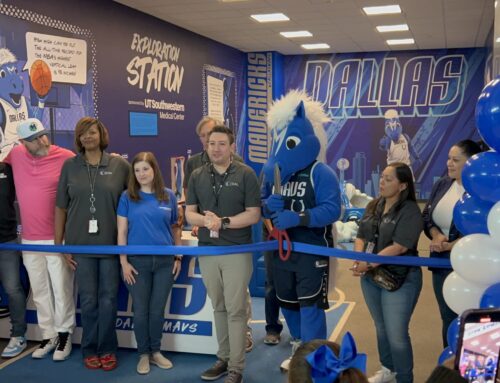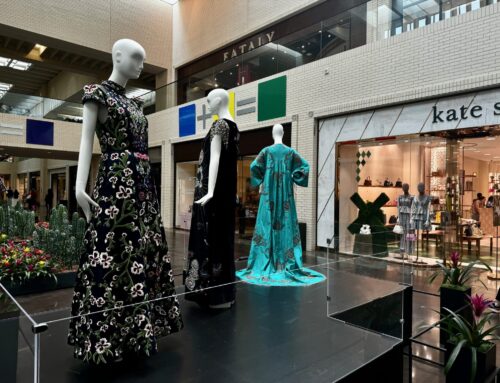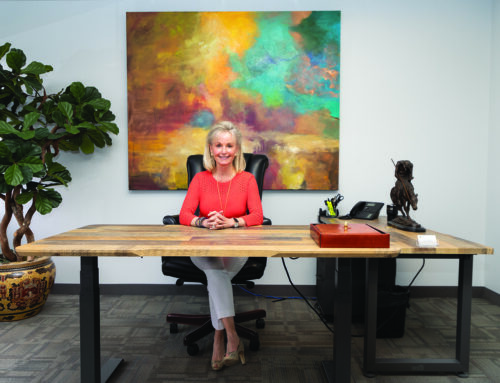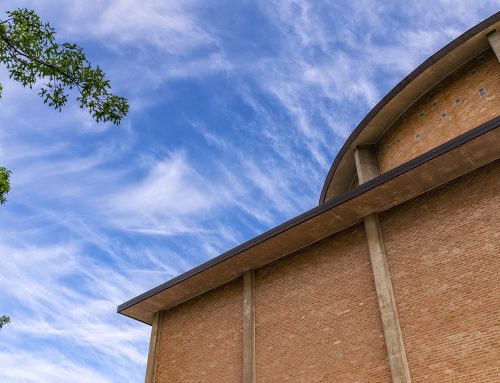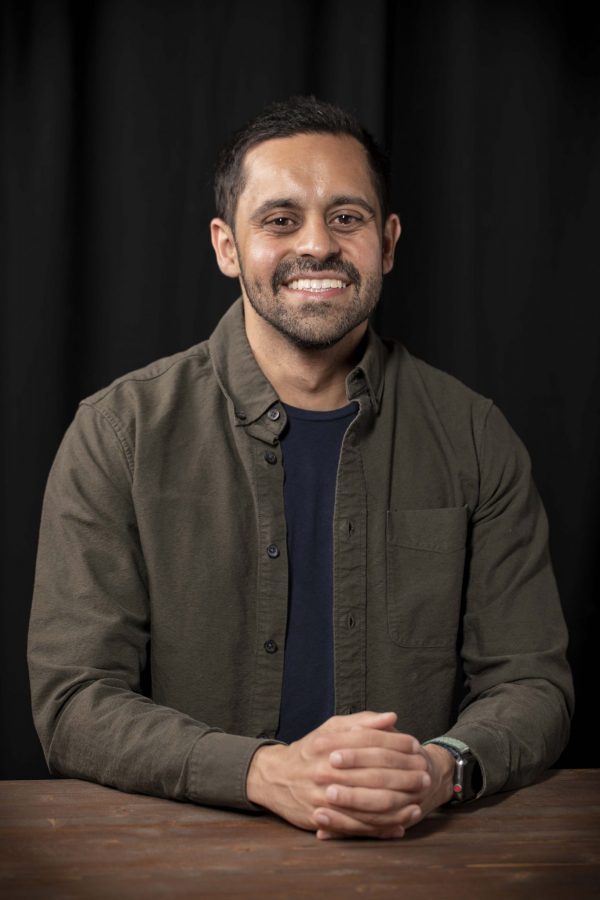
Photography by Owen Jones.
There’s a running theme in Dev Gupta’s life: Everything is a little bit of an accident.
Gupta arrived at the University of Texas not really knowing what he wanted to do. He tried marketing. Then he tried finance. He hated it, but it landed him an internship, where he sat next to the creative team. Gupta found the manager and joined that team.
He finished his undergraduate in finance and earned a master’s in advertising by the time he was 21. While in New York City for the One Show, Gupta and his creative partner met the creative director of the now-defunct agency Toy at a bar. They were a pair of naïve college kids filled with a bit of liquid courage, but they ended up with jobs.
“I think we had decent work, but we had this like, terrible arrogant swagger,” Gupta says. “And I think he kind of enjoyed it. We did not deserve it at all. It’s just like, right place, right time.”
Gupta ended up in Dallas, picked up a master’s degree in fine arts, taught at Southern Methodist University for five years and then followed a girl, Kiran, to San Francisco — all before he was 30.
Today, Gupta’s client list includes Google, Twitter, Indeed, DocuSign, Toyota and Box. Now back in Dallas, he has launched Not Dev, a UX agency.
Why Dallas?
I think I was wanting to come back. For me specifically, location is really about the people. I just wanted to be close to family.
Why Preston Hollow?
It’s where my wife grew up. So we’re actually living with my in-laws right now. But we love it here. I’m drawn to natural beauty. I feel like in Preston Hollow, you have these great lots with these big mature trees. I just love the idea of having a little secret enclave with these big trees. It just makes me feel happy.
So why the name Not Dev?
My name is Dev, and the shorthand for developers is dev. So there’s almost this funny confusion. People will have to come up with a shorthand like DEV in all caps, (which) means developers, and in sentence-case meant me. It’s just a tongue-in-cheek kind of funny thing. Then I really like the idea of what it represents. One of our foundational principles of the company is it’s really about the people. It’s suggesting it’s not really about me (but) about the team and the people. So there’s the snarky answer. And then there’s the heartfelt answer.
What’s your design aesthetic?
I would like to say I don’t have one. But I don’t think that’s true. To some extent, we all have our comfort zone. And that’s why I hired other people. I need to hire people who are better than me, who can bring a fresh perspective. I would say as a designer, it’s subtraction. I’m constantly trying to take stuff away and have just enough UX to sort of accomplish whatever you need to.
What are some founding principles?
It’s about good people doing good work. We are a services business. Ultimately, the success and failure of this company is going to be about the people. My goal is to create an environment that allows people to be the best versions of themselves. That really permeates the entire business.
Why do you think it’s important to create that environment in this industry?
Any design or creative endeavor is a really vulnerable act. You’re basically saying, “I have an idea of how something should work. I spent days, weeks, hours working on this thing, and I’m going to share with you and then you’re going to give me feedback.” That feedback can be really positive, or that feedback can be really negative. I’ve worked in several places where you didn’t feel like you could fail. Or if you did fail, there was a punishment, and when you succeeded, you were really applauded. It creates this weird loop. I want to allow people to be able to fail gracefully. That’s when you can get transformational ideas, where people feel safe to say stupid things, to ask stupid questions, to come up with ambitious ideas.
Why UX design for you personally?
I fell into it. When I was working in advertising, you’re always trying to figure out this ambiguous thing out there. What makes an ad good? What I love about UX is that there’s a concreteness to it. It’s systematic. The other thing that I really love about it is it’s iterative. If you make a logo, it’s gonna show up everywhere. If that logo is not working, it’s hard to change that once you’ve printed on 200 bags. But anytime you’re doing UX, it is infinitely updatable. I love the idea that you can always be improving your design on any project. And you can also make mistakes, which allows you to be bolder. If it doesn’t work, there’s a little bit of a short-term pain. Plus, I can’t spell. Anytime I would do any sort of old ad work, there would always be a typo. This, you can always change the words.
What makes a good UX designer?
There’s like UX designers at different stages. There’s hard skills and soft skills. They get to the different stages, those hard skills change. For the soft skills, I look for people who are curious. People who aren’t afraid of failure. People who kind of look at the world a little bit weird. When you’re doing any design, you’re trying to imagine what the world could be, not the world as it is. Thinking like that takes a little bit of arrogance. You have to believe that you can do it better.
Who’s your ideal client?
I don’t know if we have a single ideal client. One of the reasons why I started this is because I crave variety. It keeps us from just solving the same problem over and over again, and it keeps us inspired.
For a first client meeting, what can I expect?
I’m going to ask you really detailed, annoying questions. I’m going to skip the pleasantries. Let’s get into the weeds immediately. Let’s talk about your problem. Let’s try to understand it.
Most interesting project you’ve worked on?
The projects I’m working on are the most interesting projects. But the most interesting time in any project is at the beginning. My personal philosophy for the way that we do work is we try to get in there and do work as fast as possible and get to something as fast as possible. Then start to iterate. That first stretch, the time between us getting briefed and understanding to presenting first concepts, that’s the most exciting time because it’s pure, no guardrails.
What was it like teaching at SMU?
It was really fun. I feel like I was crazy under-qualified. I got hired at 24 to teach people who were 20 and 19. And some grad students were 30. So that was always weird. I still have a complex about that. I love teaching. Teaching in a lot of ways is like UX. There’s a finite problem. I was always trying to break the large problem, how to be good at advertising, into a lot of discrete, digestible, more concrete problems.
How’d you get hired at SMU?
A complete fluke. I had come back to Dallas, and I was kind of futzing around. I wanted to take design more seriously at that time. So I had enrolled at UNT. And they had an MFA in design thinking. We took a bunch of courses on how to teach teaching philosophies. I reached out to someone over at SMU. So we had this really nice connection, and it was a great conversation. And it was kind of like, let’s just keep in touch. Well, it turns out one of the SMU lecturers decided to go back to grad school. They were in a pinch. I guess I was the last person in the room.
Interview has been edited for clarity and brevity.


